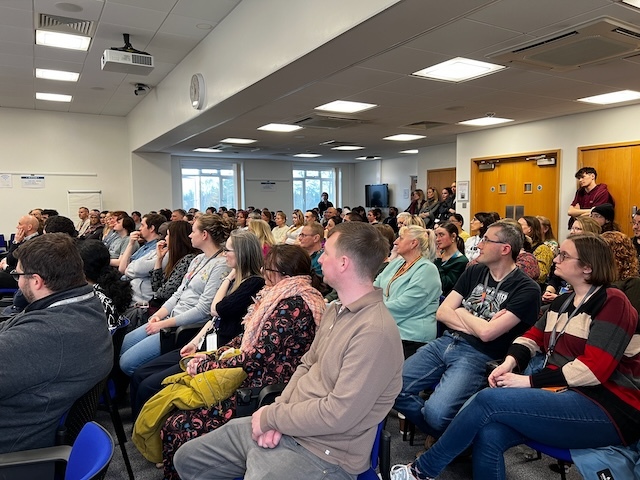So far, genetic research into age-related hearing loss in patients has yielded little insight. A reciprocal approach, combining patient data with results from mouse models, could provide the answer.
A combined approach to hearing loss research So far, genetic research into age-related hearing loss in patients has yielded little insight. A reciprocal approach, combining patient data with results from mouse models, could provide the answer. Loss of hair cells in the inner ear of the trombone mouse model aged 6 months (left) and 9 months (right). It is now possible to study the genetics of large cohorts of patients using techniques such as genome-wide association studies and exome sequencing, which enable links to be made between gene variants and disease. However, these approaches only indicate which genes might be involved, and cannot tell us how these could lead to the disease. We therefore need animal models to fully investigate the causes of the condition. This is especially true for age-related hearing loss, where the results from such studies with patients have been difficult to interpret. While these studies have identified possible contributory genes, none of the associations have been particularly pronounced. By taking a human-to-mouse approach, it is possible to see whether mice with the same genes as those identified in patients develop the disease symptoms, therefore proving that the disease is caused by these genes. Conversely, a reciprocal mouse-to-human approach, starting with mouse models such as those in the Harwell Ageing Screen, can be used to investigate how the genes could cause the human condition and identify potential ways to treat it. A mini review by Mike Bowl, published in Gerontology, has investigated how we can combine our knowledge from mouse and human studies to further research into the genetics of age-related hearing loss. Establishing good mouse models will allow researchers to investigate the onset and progression of the disease at the cellular level, something which is not possible in patients. This will improve our understanding of the causes of one of the most common forms of hearing loss. What is age-related hearing loss? Often mistakenly assumed to be an inherent part of the ageing process, progressive hearing loss in old age is the most common kind of sensory loss experienced by the elderly. Age-related hearing loss, also known as presbycusis, affects 31% of people in their sixties and 63% of those over 70, and our ageing population means that these are expected to rise. Beginning with high-pitched noises and progressing to deeper sounds, the person gradually loses the ability to hear. Less able to hear conversations, people with age-related hearing loss can experience social isolation, depression and cognitive decline. The only treatment is a hearing aid. When we hear a sound, pressure differences in the air cause the ear drum to vibrate. These vibrations are transferred along a chain of tiny bones, causing the last in the chain to knock against a small window in a fluid-filled structure shaped like a snail’s shell. This is the cochlea, which houses the tiny hair cells that detect the vibrations and transmit the signal to the brain to interpret. During age-related hearing loss, these vital hair cells are lost and the person loses the ability to hear. However, we lack detailed knowledge of the underlying processes that cause these hair cells to be lost, meaning more research is needed to understand exactly how and why this happens. Such knowledge is crucial for developing better treatments, such as gene therapy, antioxidant treatments or stem cell therapy, which hold the potential to prevent, lessen or even reverse hearing loss in old age. Why is a model required? Research into age-related hearing loss presents a number of challenges, not least of which is that all of the interesting changes happen in the cochlea, which is encased within the temporal bone – the hardest bone in the body. This means that the inner ear can only be examined post-mortem in patients, making it difficult to determine if what you see is the primary cause of the hearing loss or a secondary event occurring much later. To add to this, age-related hearing loss is extremely complex and likely to have multiple causes, including a variety of genetic and environmental factors. However, if you have a good model, every mouse within that line should have the same genetic makeup and live in the same environment, so should develop hearing loss in the same way. This means that you can investigate the progression of the disease at various stages, from the initial trigger to the end result, and record the effect it has on their ability to hear. This reciprocal, integrated approach, combining our knowledge from studies in both patients and animals, has the potential to reveal new insights into this complex and common disease. Perhaps, with our ageing population, it will lead to new treatments at a time when we need them most.


